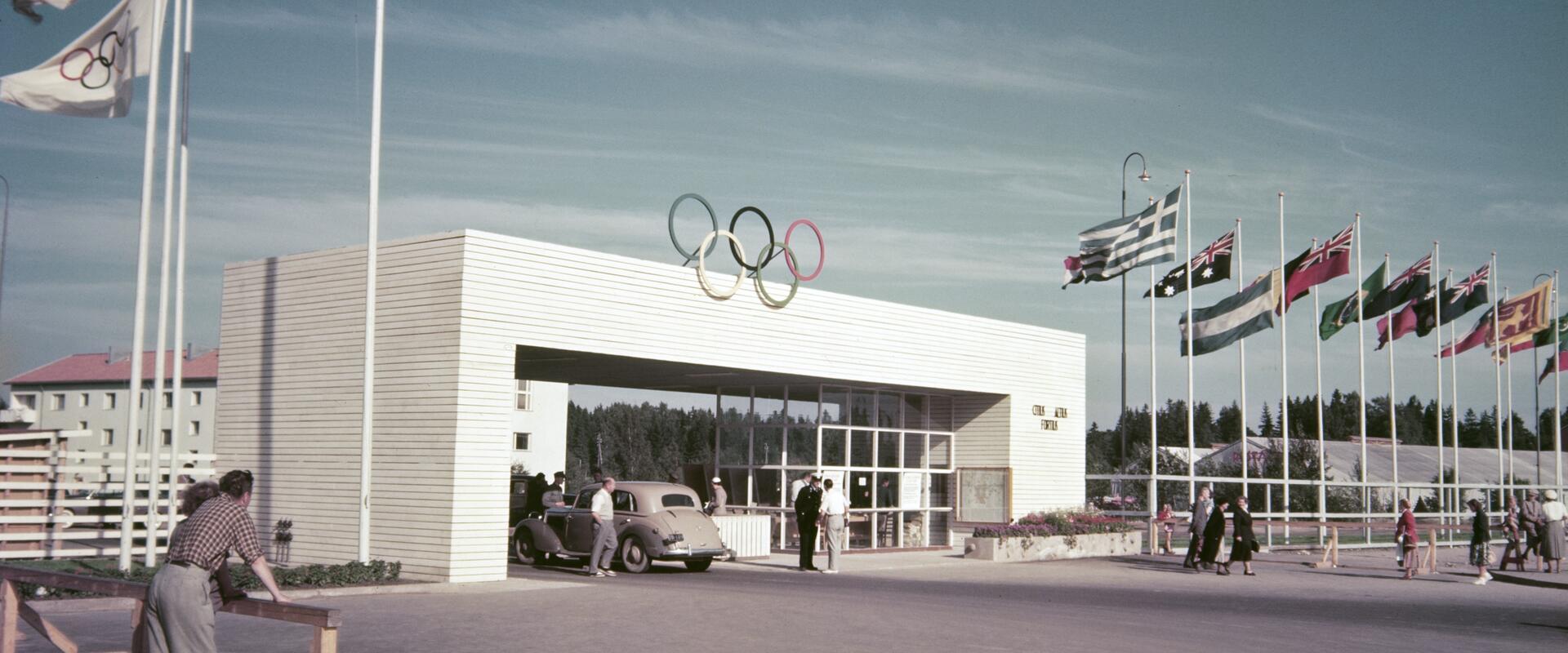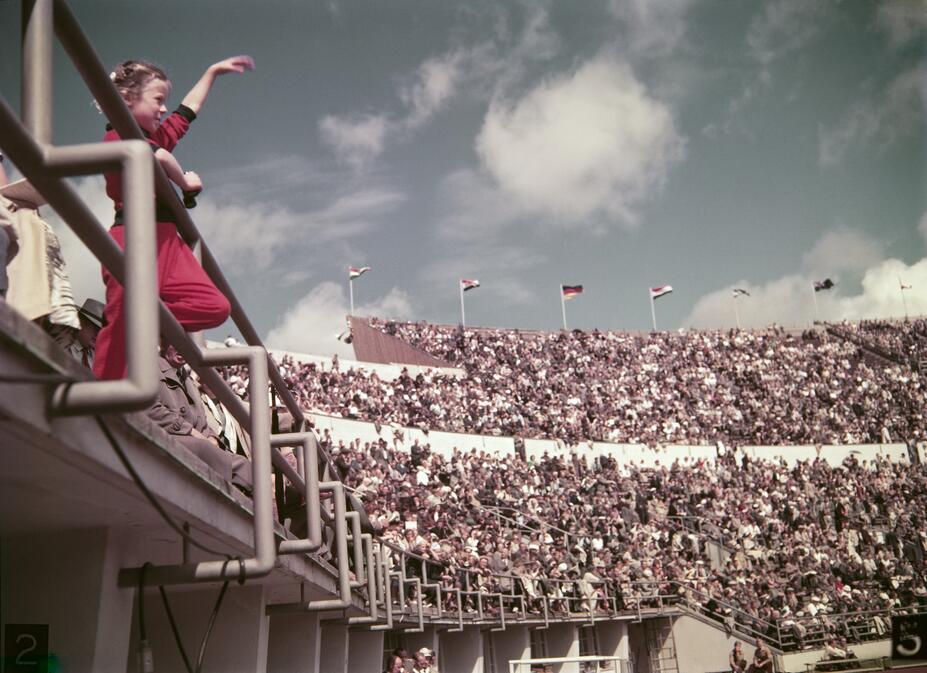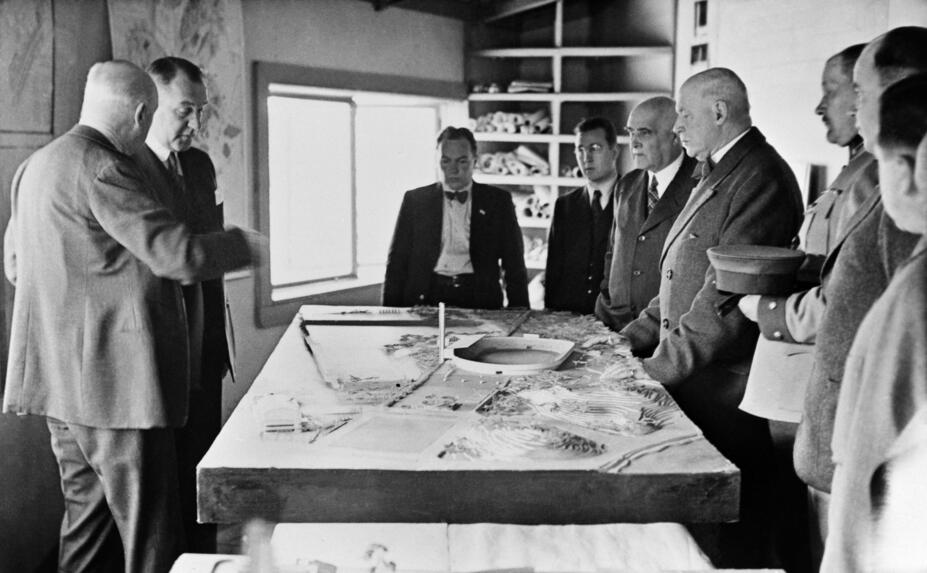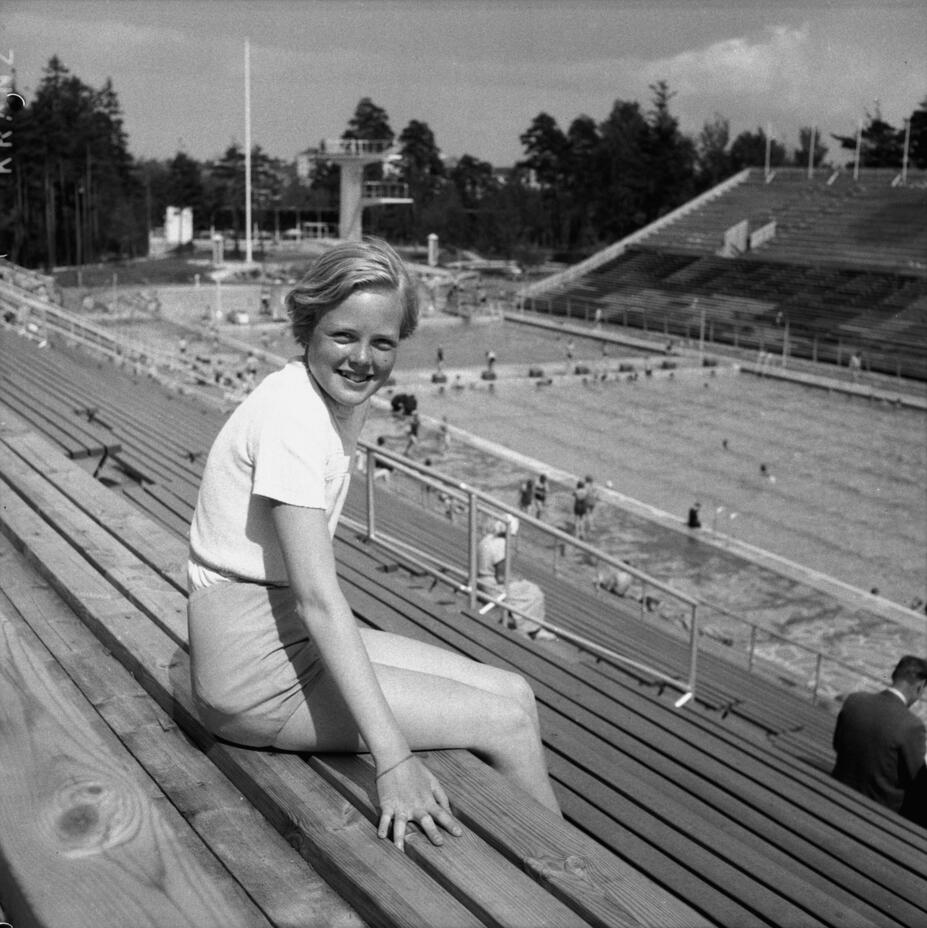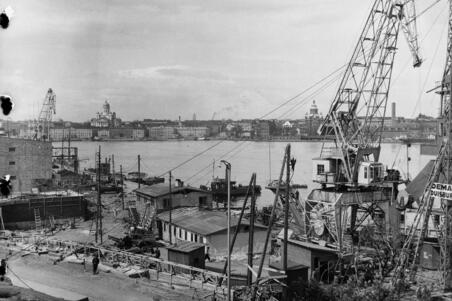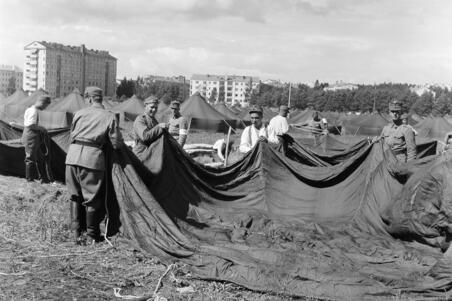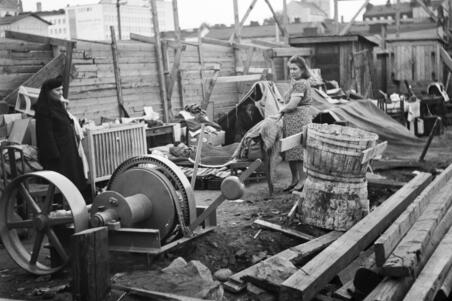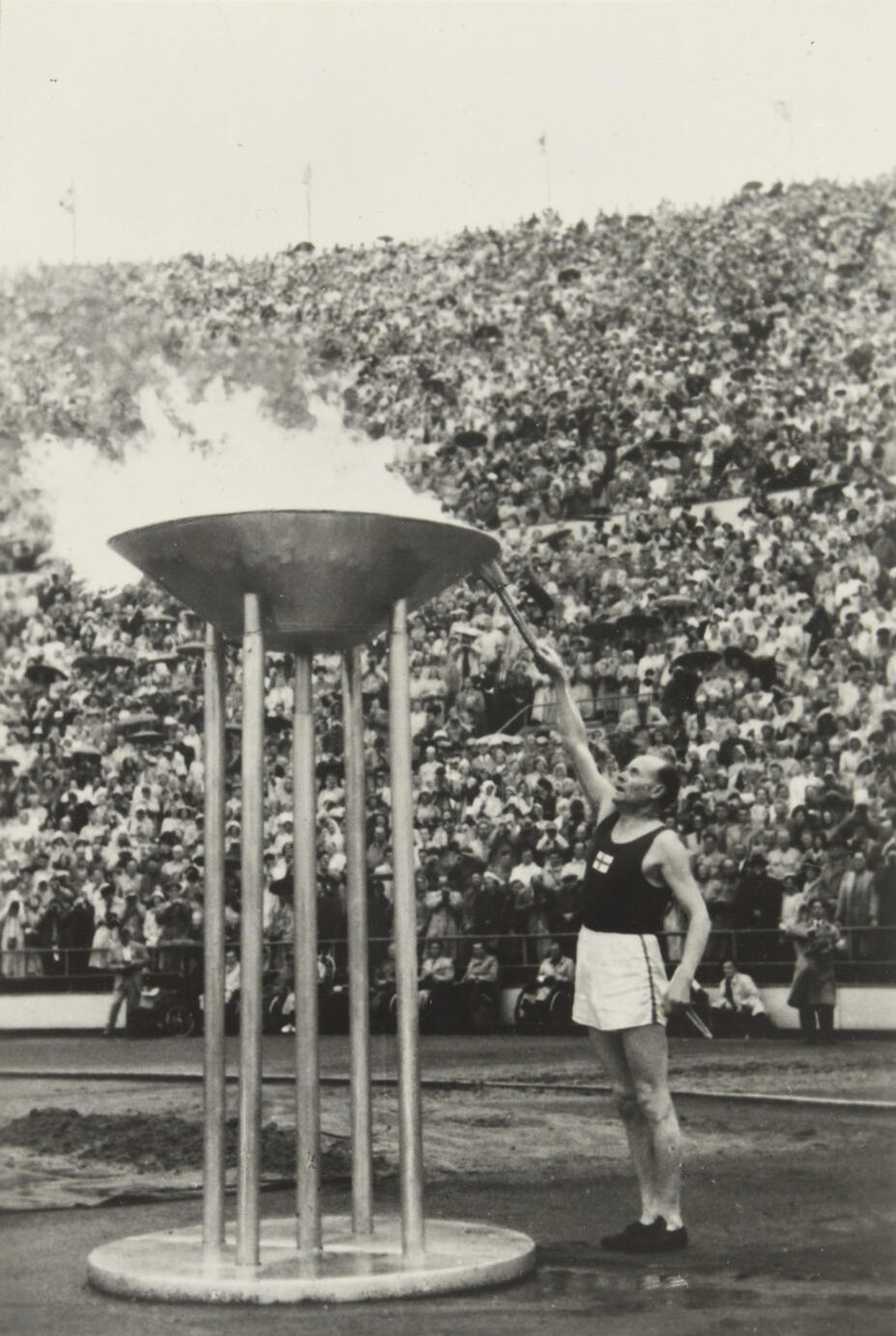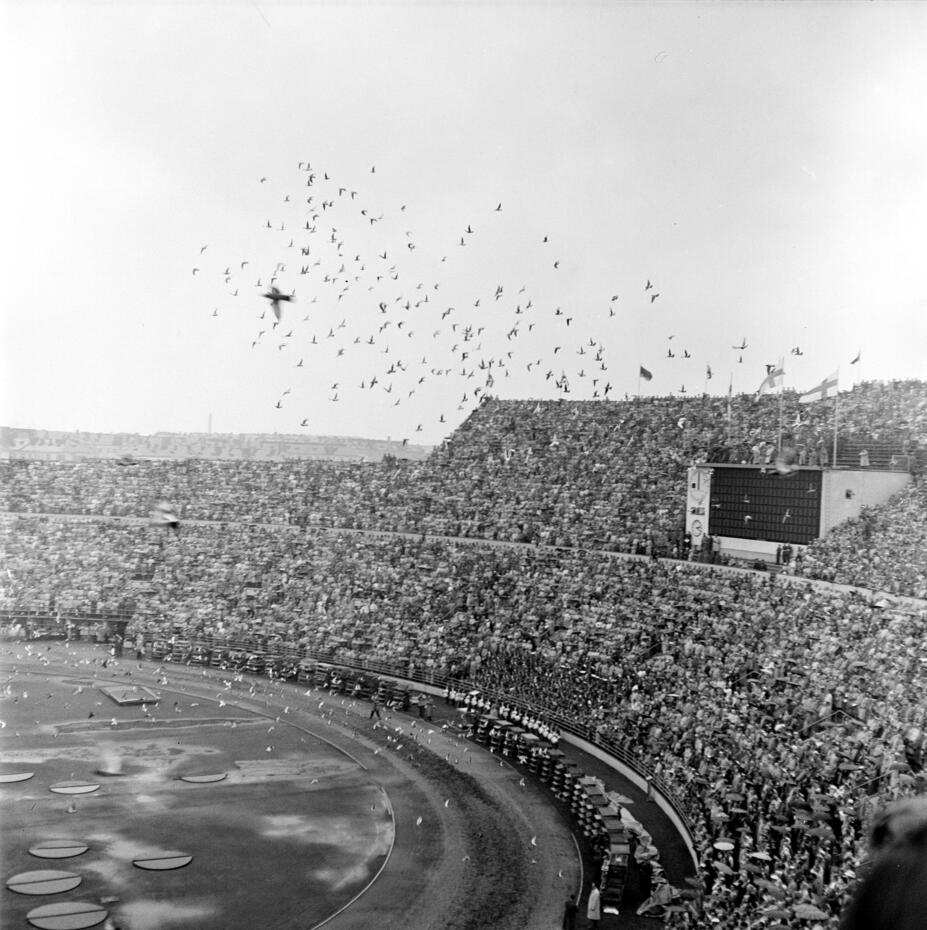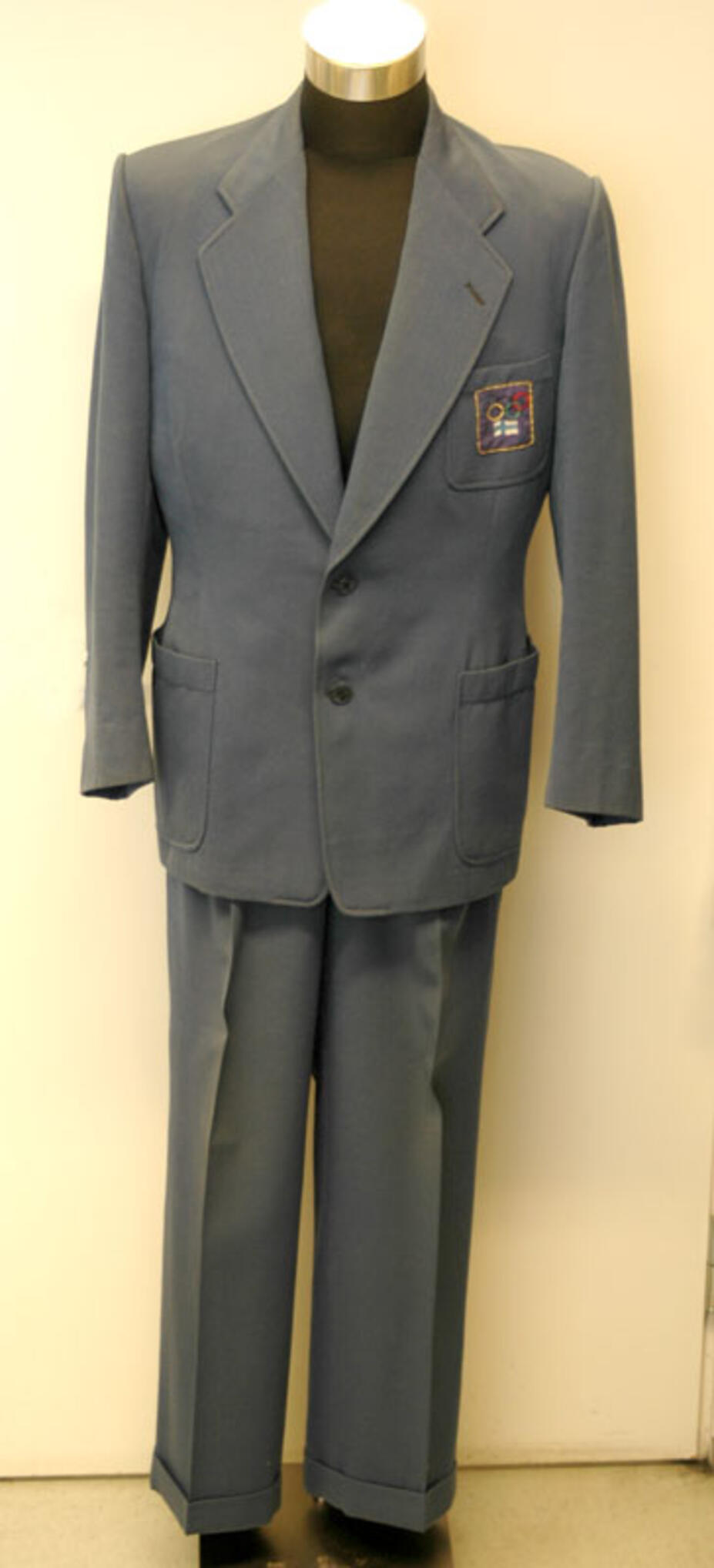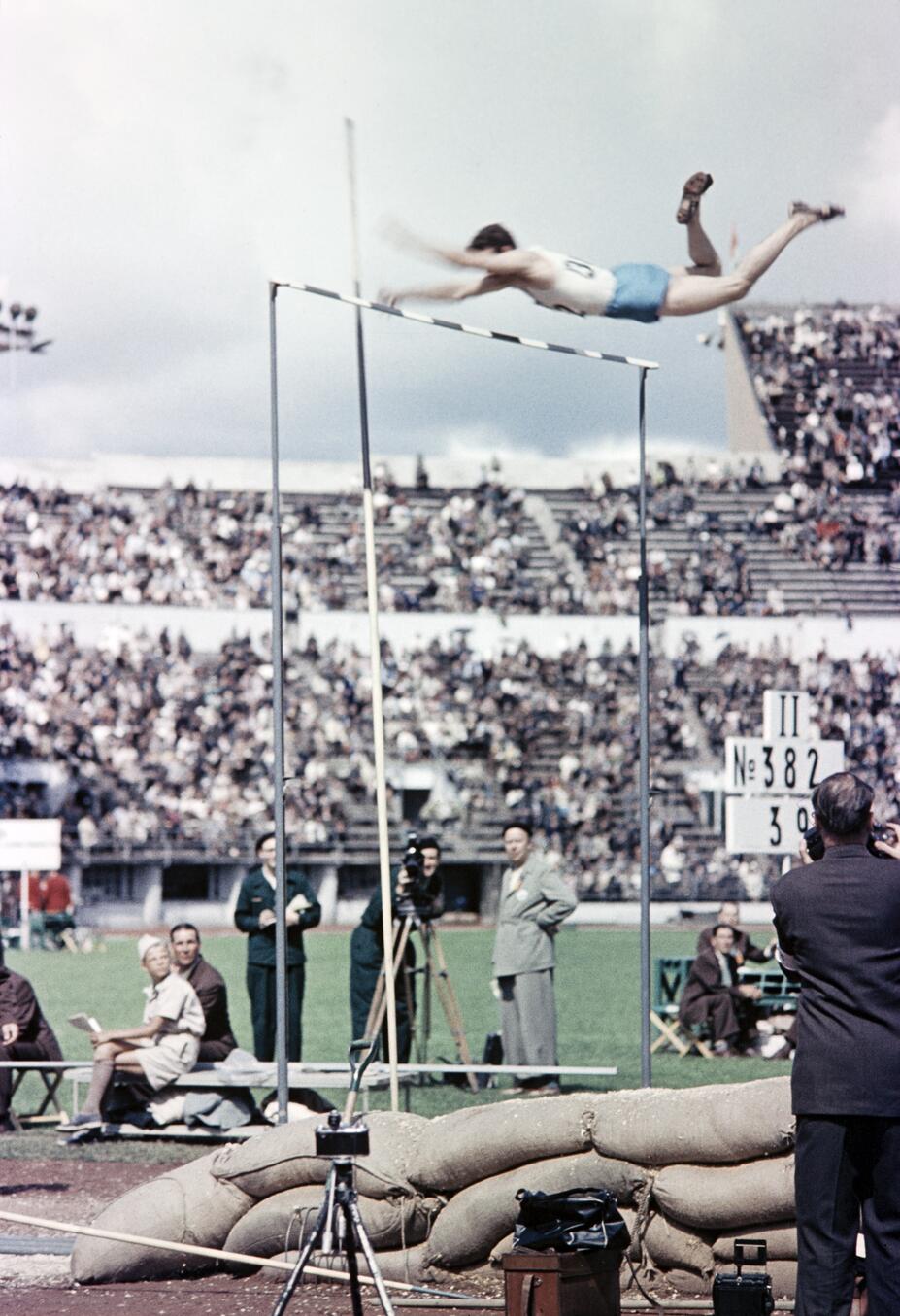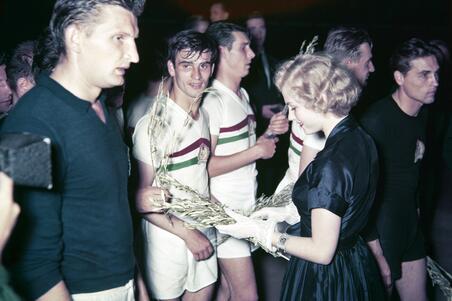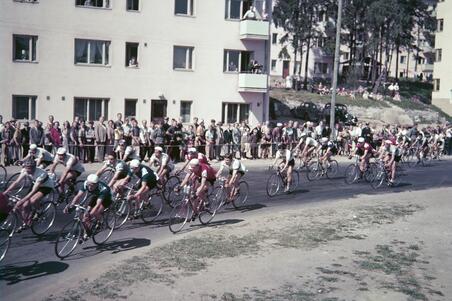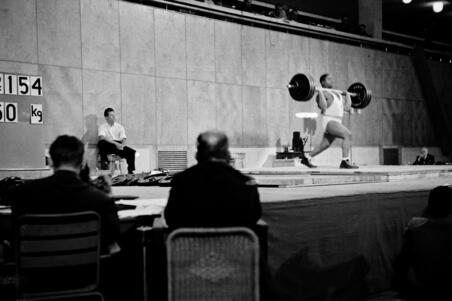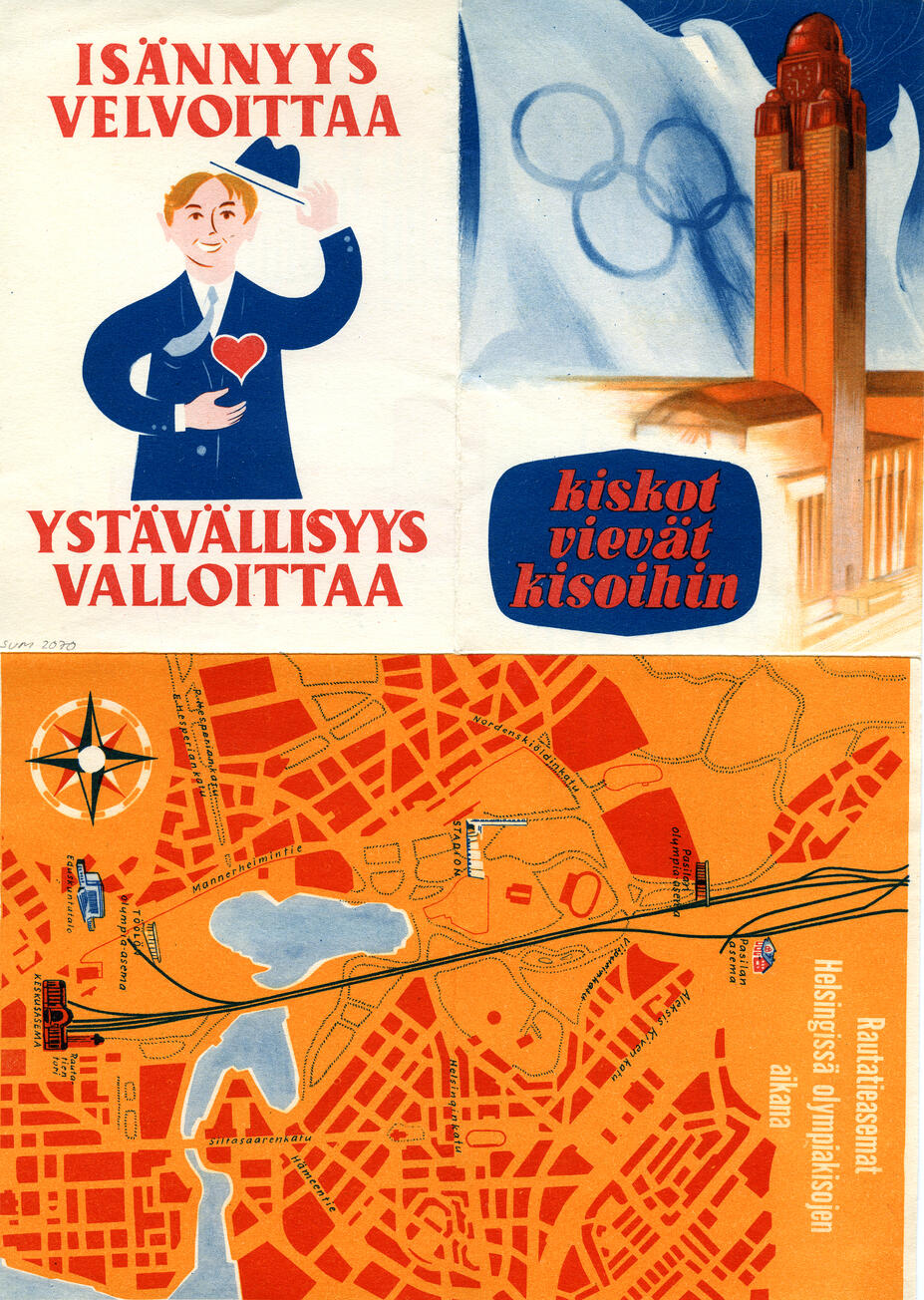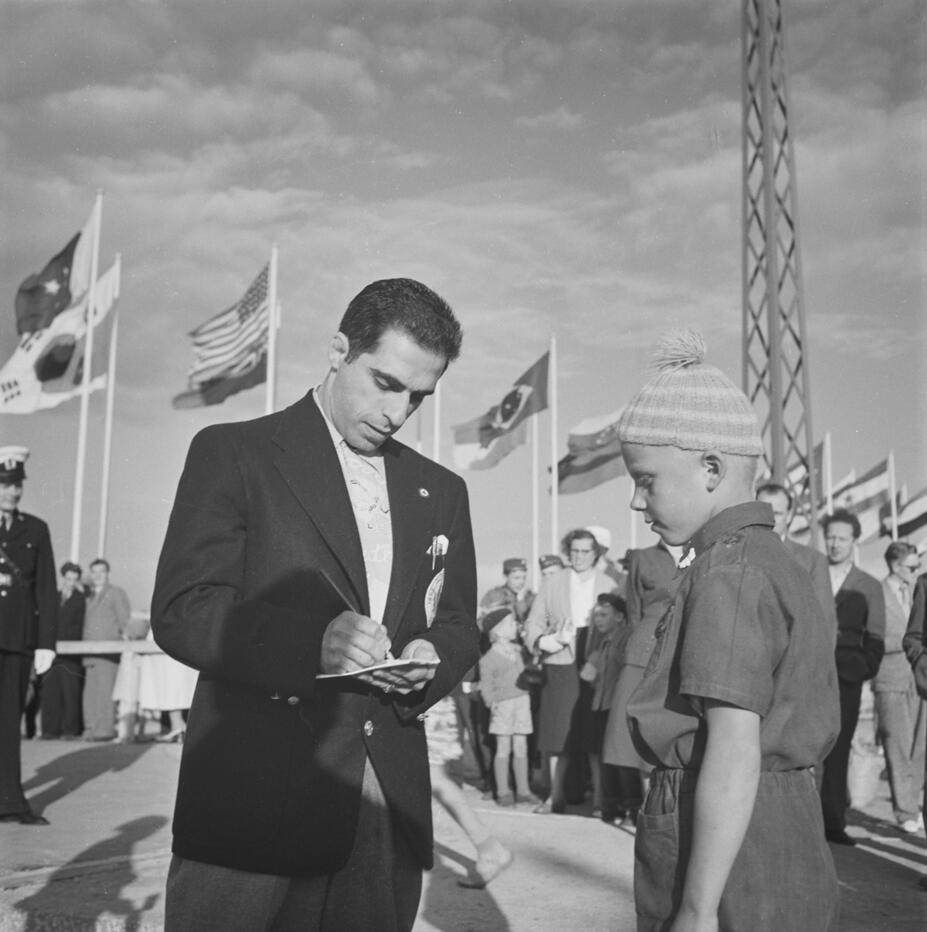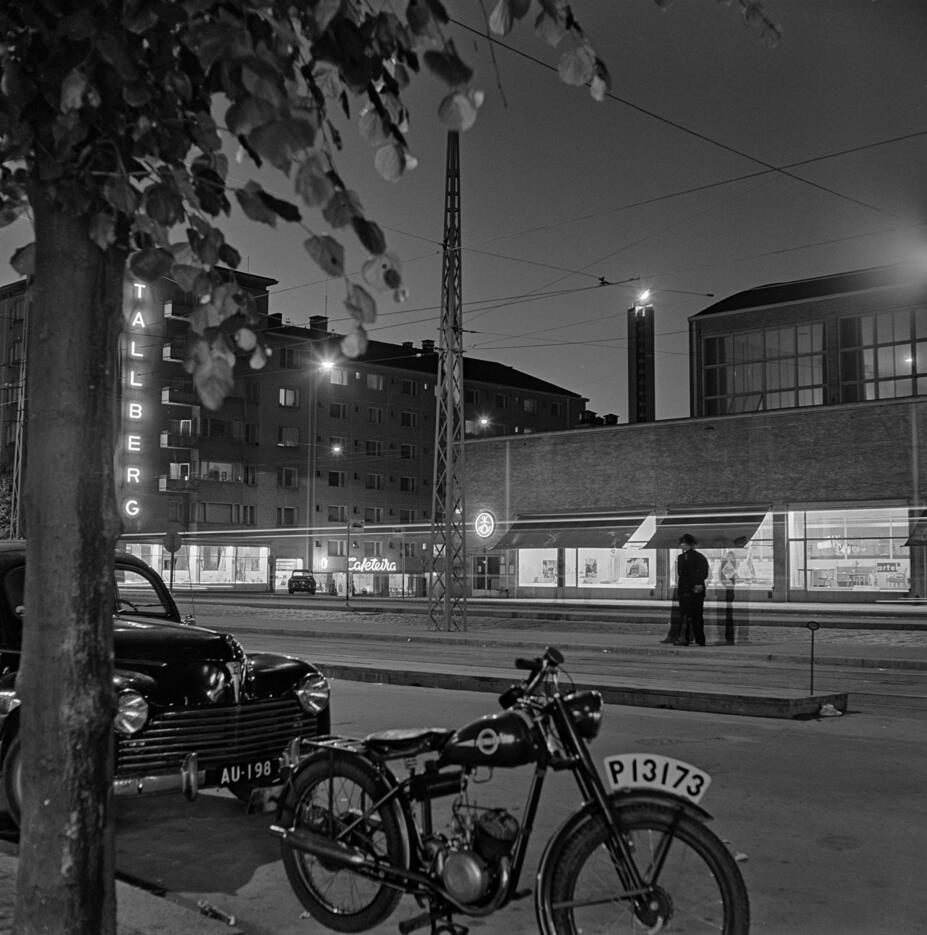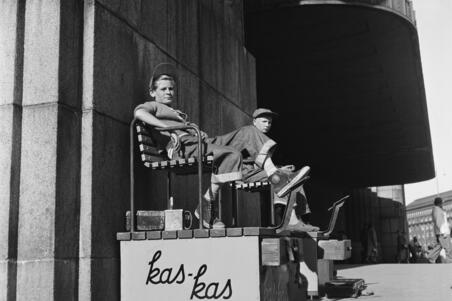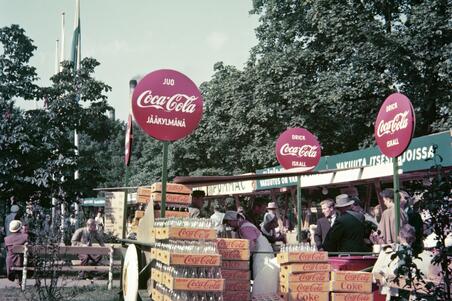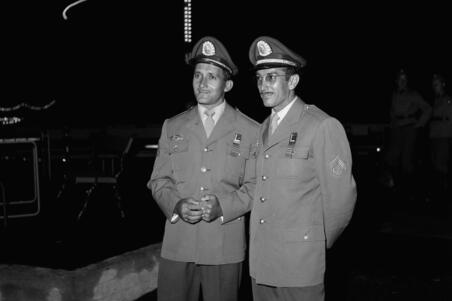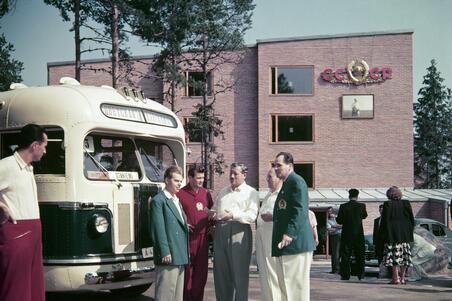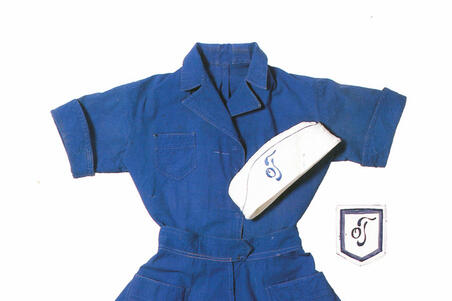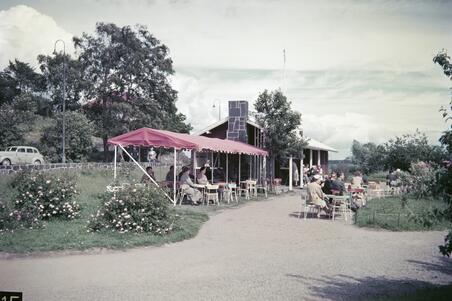Big plans
Recovering from the war, the Games were a big financial effort for Helsinki and Finland. When the Helsinki City Council decided in the spring of 1947 to bid to host the Games again, the rationing of food items was still in effect: for example, coffee was still only available on a coupon system during the Games, and it was imported as a donation from Colombia. Some of the competition venues built for the cancelled 1940 Olympics had either been left unfinished or had already fallen into disrepair.
The Finnish state participated in financing the Olympics together with the City of Helsinki and the organising committee of the Games. All in all, the Olympic Games came to cost about one and a half billion marks (more than 50 million euros in today's money), and their losses accrued to just 50 million marks (just over one and a half million euros). That being said, the organising committee of the Games pointed out that when compared to the promotional value that Helsinki and Finland received from the Games, the losses could not be considered very significant. What’s more, after further assessment, it was concluded that it would be possible to tie in the Olympics as part of Helsinki’s growth and development scheme – to not see the games merely as a money pit, but rather as an opportunity to invest in the city. This was already the line of thinking in the 1930s when the first Olympic plans were drawn up in Helsinki. Investing in sports was seen as part of the city’s culture strategy, and the competition venues were to be planned in such a way that they would serve the sports hobbies and competitions of the city’s residents in a versatile way long after the Olympics.
By far the biggest item of expenditure was the construction of housing zones to accommodate competitors. However, the “Olympic Village” in the Käpylä district was not only planned as a place for athletes to stay momentarily, but as a permanent residential area of a growing city. Following the same principle, a new nursing college was built in Meilahti as a competitor village for female athletes. Finnish athletes were housed at the Cadet School in the Santahamina military base.
Building up an Olympic City
A large number of the 1952 Olympics competition venues had already been built in the 1930s to prepare for the then-cancelled 1940 Summer Games. Through the Olympics, many new landmarks were built in Helsinki, such as the Olympic Stadium, the Töölö Sports Hall, the swimming stadium, the velodrome, and Tennis Palace. The Games also required large investments in the infrastructure of the city and the surrounding region, such as improving transport links, developing communication connections, and erecting office buildings. The government generously supported these projects – the Games were not only seen as an endeavour of Helsinki, but of the whole of Finland.
The Games anticipated an unprecedented stream of tourists to Helsinki, which posed many challenges for the organising committee. One of the biggest tasks to solve was the accommodation of spectators. It was estimated that the city’s hotels and guesthouses could accommodate only about 3,000 Olympic visitors, while it was estimated that up to 60–70,000 international guests would arrive in Helsinki for the Games. Hotels were mainly reserved for the use of distinguished guests, so new hotels were built. The rest of the city was opened to ordinary visitors: Olympic tourists were prepared to be accommodated in the homes of locals, in shared accommodation in various public institutions, camping areas, and military tent accommodation.
In the end, the number of visitors turned out to be significantly lower than the preliminary estimates, and there were no challenges in terms of space. Outdoor accommodation turned out to be particularly popular: in the camping areas, people slept both in caravans brought by Olympic tourists, and in field camp tents erected by the army.
To facilitate the arrival in Helsinki, a new ship terminal in Eteläsatama and a new airport in Seutula (known today as Helsinki-Vantaa Airport) were built. Traffic arrangements were improved and traffic lights were erected for the first time in the capital.
The construction of new housing accelerated by the Olympics also answered an urgent local need in Helsinki. After the wars, homelessness had already become such an acute problem in the city that displaced people were housed in the city’s underground civil protection shelters. There were so many of these “cave people” before the Olympics – who were mostly ordinary men of working age, such as those who moved from the countryside to the city for work, as well as frontline veterans – that due to a risk of reputational damage, the city decided to limit the conditions for access to public shelters. Those who were excluded from these relied on help from the Salvation Army, for example, and some stayed on the streets and the city’s beaches.
Igniting the Olympic flame
Finland organises the Olympic Games under very special conditions, where 69 nations will send their youth champions to compete for superiority on calm soil. There are not many other countries that could have offered people coming from different parts of the world for the Olympic Games such a corner where the echo of the prevailing contradictions can be heard as muffled as here.
Hailed as Finland’s greatest Olympic hero, Paavo Nurmi had the honour of carrying the Olympic torch to the Helsinki Olympic Stadium during the opening of the Games. Despite the bad weather, 70,000 spectators watched the ceremony. The message conveyed by the festive speeches underlining international brotherhood and the peace doves released into the air was timely. Despite the escalation of the Cold War, the Soviet team participated in the Olympics for the first time, as did numerous countries that had recently become independent as a result of decolonisation. West Germany and Japan, which were excluded from the 1948 London Olympics due to World War II, also took part in the Helsinki Games.
The beginning of the 1950s was also a time of political turmoil internally. Finnish sports clubs and organisations had strong political connections, which caused friction regarding the selection of athletes. There were two significant sports organisations in the country, the Finnish Gymnastics and Sports Federation SVUL and the Finnish Workers’ Sports Federation TUL – which was established as the challenger of SVUL after the civil war. In the early 20th century, members of working-class sports clubs were often either not accepted into competition teams, or would proactively boycott the Olympics, which were considered bourgeois. However, the shared war experiences of the 1940s softened the discords between the organisations, and working-class athletes participated in the 1948 Olympics. During this time, the two organisations wanted to put their conflicts on ice, since the Games were hugely popular both among the people and across party lines.
Dazzling sports performances
In terms of sports, the Games were a disappointment for Finland, especially when only one bronze medal was achieved in athletics. Gold medals came through in surprising sports, such as boxing and rowing. The United States collected the largest medal count of the Games, while the Soviet Union came in second. Finland was eighth in the medal statistics.
Several iconic moments were immortalised in sporting history. Czechoslovakia’s Emil Zátopek emerged as the greatest hero of the Helsinki Games, winning the 5,000- and 10,000-metre races, as well as the marathon. No other athlete has been able to achieve the same feat in the same Olympic Games: Zátopek broke Olympic records in all three of the sports he won.
The “Golden Team” of Hungarian football also turned into superstars at the Helsinki Games. Hungary, steered by Ferenc Puskás, won gold with their superior performances. The Hungarian team of the 1950s is today widely considered as one of the best national teams of all time and their successes at the Helsinki Olympics were of great importance to the overall tactical development of football.
How did one get to see these sports performances? In accordance with the prevailing custom, half of the tickets for the Games were reserved for international guests, and the other half for visitors from the host country. Tickets were sold for most events in four price categories. As an example, one could watch athletics at the Olympic stadium for the cheapest price of 300 marks, or just under ten euros in today’s money. The Helsinki Olympics were not yet televised, but the Games were followed closely on the radio.
Sports city
The Olympic Games were widely visible in the cityscape, even outside the venues and competition villages. A lot of new services appeared in the city for both competition guests and city residents.
Compared to many previous Olympic cities, Helsinki’s entertainment scene was still quite modest in the early 1950s. With the Games, many new restaurants, cafes, and dance venues were established in Helsinki. The Linnanmäki amusement park, which was originally intended to be temporary when it was constructed in 1949, was expanded for the Games, and the legendary wooden roller coaster was also first inaugurated. The possibilities for enjoying the outdoors and history also improved when a regular ferry connection to the Suomenlinna sea fortress island was opened in time for the Games. New food culture was also seen: teams from foreign countries brought their own chefs to the competition villages, chewing gum arrived in Finland for the first time, and new gin- and brandy-based long drinks – the gin version of which is still hugely popular in Finland today – were sold in bottles to make the bartenders’ work easier.
In addition to international guests, many spectators from other parts of the country gathered in the capital, as did the working force. The practical arrangements of the Olympic Games, from guiding tourists to selling tickets and feeding the athletes, required the work of thousands of people, many of whom travelled to the Games to work from other parts of Finland.
Access to the competitor villages was limited to teams only, but curious townspeople and guests constantly flocked to their vicinity. Friendships and intimate relationships were born, even though, for example, the staff of the Games were strictly prohibited from making close contact with the athletes. In the evenings, Linnanmäki was a popular meeting point for many couples who had met at places like the Olympic canteen.
But an even sadder story is that some of our young women stand for long periods of time by the fence, even showing their stupidity with their expressions. If they themselves have no ability to preserve the respect of our women, let them be driven out.
This person, using the pseudonym “Wishing the best”, disapproved of the admiration of the athletes shown by local people on the slopes of the Olympic Village. Taken from the opinion section of the newspaper Helsingin Sanomat on July 19, 1952.
Not all athletes were accommodated in the Käpylä competition village. Unlike today, women and men were divided into different locations, and accommodation for female athletes was arranged at the nursing college in the Meilahti district. As a compromise, the teams from the Soviet Union and the Eastern Bloc countries lived in the adjacent city of Espoo, more precisely on the Otaniemi student campus, because the Soviet authorities were worried about close contact with Western athletes and possible defections.
Athletes and other competition guests also brought a new kind of multiculturalism to the streets of Helsinki. People with other than white complexions were still quite a rare sight in Helsinki. By reading periodicals and watching film documentation from the Games, one can notice that the different-looking Olympic guests arriving from all over the world were treated with curiosity, even exoticism.
The legacy of the Helsinki Olympic Games
Despite the festive buzz, the Helsinki Olympic Games might also be considered a disappointment. Both the medal balance of the Finns and the number of tourists who came to watch the competitions were significantly lower than expected. However, it is difficult to evaluate the value of the Olympics only in numbers.
The Games were an international show of strength for Finland. The country, which had experienced heavy wartime setbacks and was still getting back on its feet, managed to organise a major international event, the arrangements of which were widely praised around the world. Diplomatically, the Olympics were a generous offering by Finland towards both the East and the West. In order to get the Soviet Union to join, special solutions had to be found, which the International Olympic Committee also praised, but at the same time Finland showed that it was an open, market-driven society that wanted to be part of the international community.
In addition to the memories, the Helsinki Olympics’s legacy was a built cultural environment, which has been preserved in active use in accordance with the spirit of the Games to this day – although the Tennis Palace has been repurposed as a multiplex cinema and an art museum. Demonstration of the ability to organise major events made an impression on international arenas, and in the coming decades, Helsinki was able to organise both major sports and political events.
